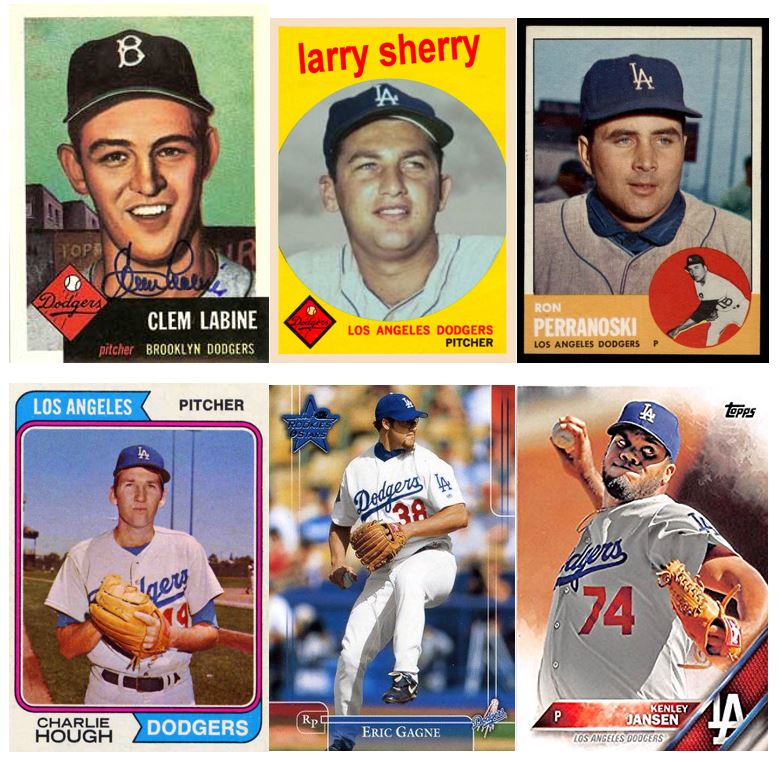Because we already used Clayton Kershaw’s birthday as an excuse to delve into Part 9 of Brothers in Arms: Koufax, Kershaw, and the Dodgers’ Extraordinary Pitching Tradition (order now!), our series of previews ends on Part Eight: The Bullpen.
Niftily, the position of relief pitcher emerged with the Dodgers around the same time as the Dodger pitching tradition itself took root.
For nearly the entire history of the Dodgers before the end of World War II, when their pitching tradition was incubating, almost every pitcher they used in relief was a moonlighting starter. Only three players in Brooklyn history totaled more than 200 innings in relief before 1940, and two of those were swingmen — Watty Clark and Sherry Smith, who started more games than they relieved. The lone exception, Rube Ehrhardt, did mainly pitch out of the pen from 1926 to 1928, with modest effectiveness.
Starting with Hugh Casey in the 1940s, the game changed, and the Dodgers began transforming pitchers who weren’t cut out to be fulltime starters into pitchers who were primarily relievers, and later purely relievers. In the history of Dodger pitching, they play a supporting but key role, occasionally grabbing headlines—some heartbreaking, some thrilling.




